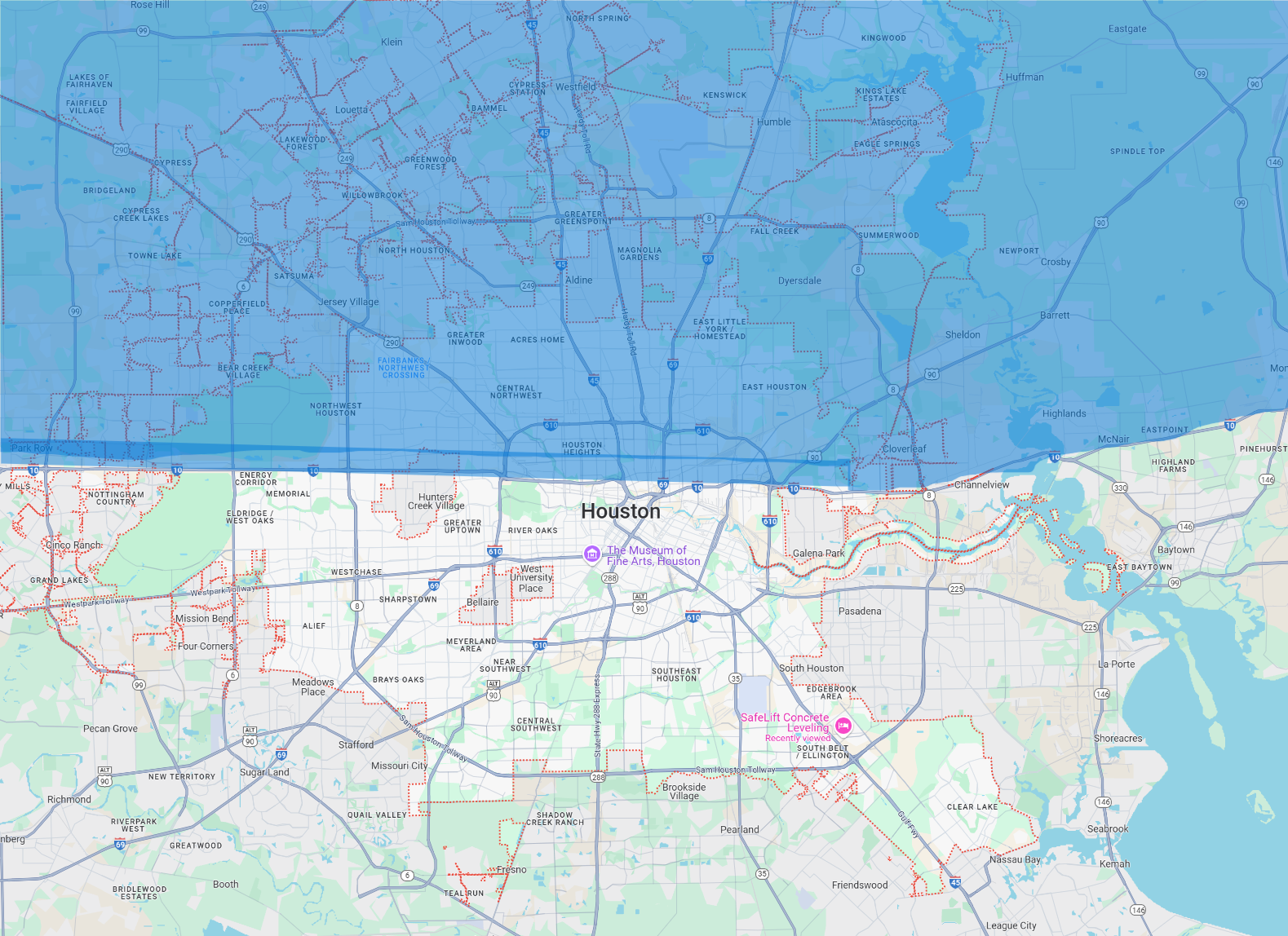
If you're a Houston homeowner dealing with uneven driveways, cracked sidewalks, or sunken patio slabs, you're not alone. Houston's unique geological composition creates specific challenges that make concrete settling a common problem throughout the region.
Houston's Clay Soil Challenge
Houston sits on what geologists call "expansive clay soil" – a type of earth that dramatically changes volume based on moisture content. This isn't just any clay; it's a specific composition that includes minerals like montmorillonite, which can expand up to 10 times its dry volume when saturated with water.
During Houston's wet seasons, this clay soil absorbs massive amounts of water and swells, creating upward pressure on concrete slabs. Conversely, during dry periods or droughts, the clay shrinks significantly, creating voids and gaps underneath your concrete surfaces.
The Cycle of Settling and Damage
This constant expansion and contraction cycle creates a "pumping" effect that gradually undermines the support beneath your concrete. Here's how it typically happens:
1. Initial Settlement
New concrete is poured over compacted soil, but over time, the clay beneath begins its natural expansion-contraction cycle, creating small voids.
2. Water Infiltration
Houston's frequent rainfall and humidity cause the clay to swell, but water also finds ways to penetrate beneath slabs through cracks or poor drainage.
3. Soil Washout
During heavy rains, soil particles can wash away from beneath the concrete, creating larger voids and less support.
4. Visible Settling
Eventually, the concrete slab loses enough support that it begins to visibly sink, crack, or become uneven.

Signs Your Concrete is Settling
Watch for these warning signs that indicate your concrete may be experiencing settlement issues:
- Uneven surfaces: Noticeable height differences between concrete sections
- Trip hazards: Raised edges where slabs meet
- Cracks: Especially cracks that run along slab joints
- Water pooling: Areas where water collects instead of draining properly
- Gaps: Visible spaces between concrete and adjacent structures
Why Traditional "Fixes" Don't Work
Many homeowners try to address settling concrete with temporary solutions like patching cracks or applying sealants. However, these approaches don't address the root cause – the void beneath the slab. Without proper support, the concrete will continue to settle and the problems will return.
The Modern Solution: Polyurethane Foam Leveling
At SafeLift-HTX, we use advanced polyurethane foam injection to address both the symptoms and the cause of concrete settling. This method:
- Fills voids beneath the concrete completely
- Provides permanent, stable support that won't be affected by moisture
- Lifts the concrete back to its original position
- Resists future soil movement and water infiltration
Prevention and Maintenance Tips
While Houston's clay soil will always present challenges, homeowners can take steps to minimize concrete settling:
- Maintain proper drainage: Ensure water flows away from concrete surfaces
- Address cracks early: Small cracks can allow water infiltration that accelerates settling
- Monitor for changes: Regular inspections can catch problems before they become major issues
- Professional assessment: Have settling concrete evaluated by experts who understand Houston's unique conditions
When to Call the Professionals
If you notice any signs of concrete settling on your property, it's important to address the issue promptly. Early intervention with professional concrete leveling can prevent minor problems from becoming major structural issues that require complete replacement.
At SafeLift-HTX, we understand Houston's unique soil conditions and have the experience to provide lasting solutions. Our veteran-owned company backs every job with a 5-year workmanship warranty, giving you confidence that your concrete repair will stand up to Houston's challenging environment.